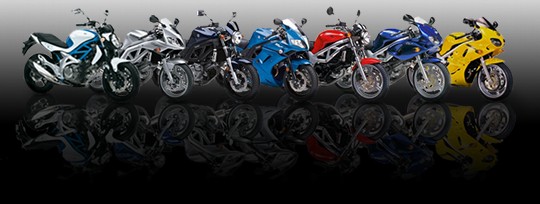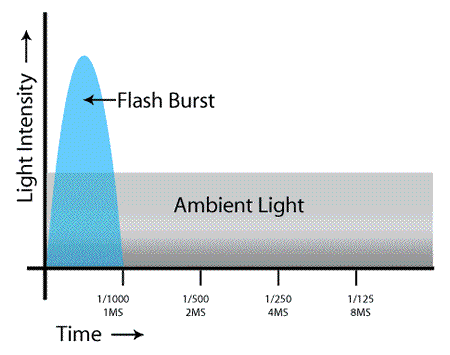 |
 |
|
|
#121 |
|
Member
Mega Poster
Join Date: Feb 2009
Location: Ruislip
Posts: 1,131
|
Excellent explanation from Filipe. Now, here's the condensed version...
1) The aperture controls how much light the lens allow through, with each stop halving or doubling the amount of light. It also controls depth of field 1.4) The shutter controls how long the sensor is exposed to the light from the lens in fractions of a second. So 1/60 is a sixtieth of a second. The steps double or halve the time the shutter is open. 2) The sensitivity of you sensor can be varied by changing the ISO rating. The steps either halve or double the sensitivity. (are we seeing a pattern here?) 2. 4) Flashes produce a very short burst of light, which diminishes with distance. An approximate aperture can be given by Guide Number / Distance. 5.6) Try it for yourself. Put your camera on a tripod and try changing aperture and shutter speed. Keith. |
|
|

|
|
|
#122 |
|
Guest
Posts: n/a
|
And once again Keith demonstrates how to condense my drivel into 6 line posts
It also brought to my attention that I left out an important bit, which is related to shutter speed while using flash. And the reason why I forgot to talk about it is... ... because shutter speed, within a given set of conditions, has no effect on flash exposure. That means you can shoot at 1/30s or 1/200s and still get the same exposure from the flash. The only exposure controls (besides flash power) that affect the flash exposure are aperture and ISO. So what's the catch? This is only valid for the flash part of the exposure. Imagine you're in a completely dark room, and all your light will come from a flash that will fire at the moment of exposure: shoot at 1/2s or at 1/200s and you get exactly the same exposure. Now turn on a couple of lights in the room and those will contribute to the exposure, in addition to the flash: shoot at 1/200s and you won't notice their effect (they're just too dim to register), shoot at 1/2s and you'll most probably see their effect in addition to the flash itself. This in itself is a wonderful tool to explore, as it allows you to balance your ambient light with flash to your taste, with at least one independent control over each part: Ambient light: shutter speed / aperture / ISO Flash: flash power / aperture / ISO This bit is also the reason why cameras will default to a minimum shutter speed when people turn the flash on (either built-in or add-on) in dark conditions, and it's usually 1/60s. The camera, with default settings, knows it's exposure will depend mainly on the flash pop, so it can safely ignore everything else. Everyone has probably seen those failed attempts at night time group portraits in front of a dimly lit fountain or monument, where the result you get is a bunch of people standing in the middle of a black hole without the feature behind them, right? That would be the camera using nothing but flash to light them, at said default minimum shutter speed, which is still way too short to allow the feature to be registered in the sensor. If you tried that same photo without the flash, the camera would probably tell you you'd need a much longer shutter speed to get a correct exposure for that background, so 1/60s isn't going to take you anywhere... ... cue Slow Sync flash. This will allow the camera to ignore the minimum shutter speed and use whatever it feels necessary to get the correct ambient exposure, in addition to the flash itself. Now if this exposure is too long, you might start getting blurred results, and if you're panning and tracking motion, since your flash will fire at the beginning of the exposure, you'll definitely get a funny looking streak in front of the object you're moving with. You'll get a very strong notion of motion, because of the streaks, but unfortunately on the wrong side of the object: Imagine you're tracking and shooting a bike; what you get is a flash "frozen" image of the bike and then the streaks in front of it as it moves forward and you're panning with it. Result? A bike that looks like it's going backwards. ... cue Rear Sync flash. The camera will move the flash exposure to the end of the shutter opening time, allowing you to "freeze" the object on the right side of the image. Now as you press the shutter and pan, you get the ambient light first (creating the blurry streaks), and the flash "frozen" image right at the end of the streaks. Whew. Right, there's still a few more points to cover (like the given set of conditions I mentioned earlier, balancing with daylight and colour), so I'll come back later for that! Last edited by Filipe M.; 10-02-11 at 10:21 AM. |

|
|
|
#123 |
|
Member
Join Date: Jun 2007
Location: South West London
Posts: 531
|
This is a heck of a lot of information to digest and understand. I'm still working through your earlier posts.
I find this this is a good supplement to what you're saying, Filipe:  (from here) |
|
|

|
|
|
#124 | |
|
Guest
Posts: n/a
|
Quote:
|
|

|
|
|
#125 |
|
Member
Mega Poster
Join Date: Feb 2009
Location: Ruislip
Posts: 1,131
|
One final piece is the maximum flash sync speed.
The light output from a flash can last anything from 1/10000 of a second to 1/1000 of a second depending on the power and design. But, most film cameras will give odd results if you set the shutter speed to 1/1000. This is because the shutter is made up of two parts (like roller blinds). The first blind uncovers the film to expose it to light, and the second follows behind it to block the light again. So effectively you have a moving slit passing across the film. To get a 1/1000 of a second exposure, the second curtain will start covering up the film before the first has reached the other side. So whenever the flash fires part of the film will be covered by one of the blinds. With modern digital cameras things are a little different because they use electronics to activate the sensor instead of moving blinds. But at high shutter speeds you still get poor overlap between the sensor activation and when the flash is producing maximum light. This tends to mean rather erratic exposure. Nikon does have a workaround for this, which means firing the flash for a longer period to ensure better overlap. But I'm not a big fan since it means reducing the amount of light from the flash. As a general rule, I avoid shutter speeds above 1/250 when shooting with a flash and usually keep to 1/125 or slower. |
|
|

|
|
|
#126 |
|
Member
Mega Poster
Join Date: Feb 2009
Location: Ruislip
Posts: 1,131
|
The maximum sync speed is a bit of a problem in very bright conditions where you want to mix natural light and flash. Typically you're up against three constraints:
1) You want a shallow depth of field to isolate your subject from the background. This means a wide open lens with lots of light coming in. 2) You need a fast shutter speed to control the amount of light that reaches the sensor from the wide open lens 3) You need a slower shutter speed to sync with the flash Even with the ISO turned right down to 100 (least sensitivity) you might not be able to satisfy all three requirements. Sometimes an ND8 filter can help. This is a plain grey filter that blocks 87% of the light reaching the camera, for both the flash and natural light. This will allow you to reduce the shutter speed by three stops, providing the flash is powerful enough. Last edited by keith_d; 10-02-11 at 01:19 PM. |
|
|

|
|
|
#127 | |||
|
Guest
Posts: n/a
|
And this is exactly where I was going. Allow me to add just a few bits of drivel
Quote:
Normal mechanical shutter DSLRs will behave pretty much like the old film SLRs, where the mechanical shutter is the main factor contributing to the exposure timing. In this case, the shutter behaves just like Keith described: a curtain exposes the sensor, another one follows it and covers the sensor. At "slow" speeds, one curtain will be fully open before the other one starts to move; if you fire a flash during this period of time, all of the sensor will get the same quantity of light. At fast speeds, the second curtain will start to move before the first one reaches the end of it's travel. Fire a flash sometime in the middle of this and only a bit of the sensor gets to see the light. Non-SLR digital cameras have a purely electronic sensor, that is constantly exposed to light coming through the lens (that's why you get to see the image in the LCD while framing, whereas in a DSLR you can't when you use it as such). What the camera does when taking a photo is turn off the sensor, switch from "live view" to picture taking mode, activate it for the amount of time dictated by the shutter speed, then go back to live view mode. This means the whole area of the sensor is exposed to the light at the same time. Hybrid shutter DSLRs have a mixed way of doing things: the mechanical shutter will work up to a given speed, usually the one that allows the whole sensor area exposed at any given time, and at faster speeds than that the sensor activation will control the exposure time in between mechanical shutter opening and closing. The maximum speed the shutter can operate at while still keeping the whole area of the sensor exposed at the same time is called the Maximum Sync Speed, and for purely mechanical shutter DSLRs it's usually around 1/200s for the D60 / D80 / D90 and 1/250s for the higher spec models D7000 / D300 / D700 / D3. Anything above this and you start getting progressively bigger bands without flash exposure, unless you use the trick Keith mentioned on his other post. For hybrid shutter cameras, this changes quite a lot. For instance, for the Nikon D40 / D70, the manufacturer recommended sync speed is 1/500s, but you can sync at even higher speeds than that, and as long as your flash pulse is shorter than the duration of the exposure and assuming your camera / flash system are able to communicate successfully in such a short amount of time, you can theoretically sync up to the maximum shutter speed. This is one of the reasons that make these (now) old and inexpensive DSLRs so sought after by strobists all over the world, even though they are "only" 6 MP. Quote:
Quote:
The ND8 filter method is used by a lot of people to counteract this, but it also has it's drawbacks like making it harder to focus properly, and most FP users also say that if you're going to lose power anyway (that's what the ND filter does, basically), you might as well lose it on the flash instead of putting something else in front of your lens. Personally I'll use FP over an ND8 most of the time, but that's because I'm too lazy to screw the filter on the lens and then take it back again for the next shot Last edited by Filipe M.; 10-02-11 at 06:34 PM. Reason: house cleaning! |
|||

|
|
|
#128 |
|
Member
Join Date: Jun 2009
Location: Turre, Almeria
Posts: 668
|
Help!
Was out yesterday with the new lens, 70-300 Tamron on a Nikon D5000. In the main the results were poor. For example, one taken from about 20feet with a low sun behind me. 180mm - Auto(ISO400) 1/1600 @ F/5. Set the focus on the mrs. The tree next to her is crystal clear but she is out of focus. The vast majority of what I took, all on Auto, were out of focus. Its driving me nuts. The question is what is the depth of field with those settings - I would have thought that the 6" she was back from the front of the tree would still have had her in focus. Seriously thinking of switching Auto off and doing it the old fashioned way just like when I had a SLR.
__________________
"It's not the years in your life, it's the life in your years." Currently - Fighting the urge... seen a nice Triumph America Previously - Honda CB125, Honda CB400-4 & BSA B40, Moto Guzzi 850, Yamaha RD250, Suzuki GT380, Kawasaki Z1B, Kawasaki Z650, Honda VFR, Triumph Street Triple R. |
|
|

|
|
|
#129 |
|
Guest
Posts: n/a
|
learning lots here, you keeping up northern lass
|

|
|
|
#130 | |
|
Guest
Posts: n/a
|
Quote:
|
|

|
 |
|
|
 Similar Threads
Similar Threads
|
||||
| Thread | Thread Starter | Forum | Replies | Last Post |
| Photo Comp - Chat Thread | 5hort5 | Photos | 1254 | 15-06-20 04:13 PM |
| Regulator chat thread. | 5hort5 | SV Talk, Tuning & Tweaking | 98 | 13-07-16 10:04 AM |
| welsh TT weekend away (take 2) Banter / Chat thread | hovis | South & West Surfers | 452 | 13-10-09 04:00 PM |
| North Wales Rideout #4 thread - Please use this for chat | Luckypants | The Border Patrol | 287 | 26-11-08 09:44 AM |
| Booking chat thread. | rictus01 | 2007 Annual Rideout | 110 | 27-06-07 02:15 PM |